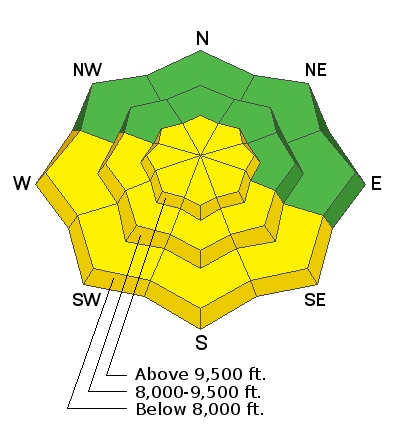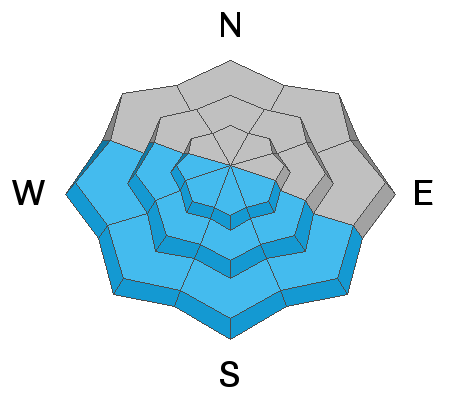A couple of variables to consider for wet snow today. First is the cloud cover; today, we will start with mostly cloudy skies and end with clear skies. Second is the 700 millibar (10,000') temperature forecast. Currently, it's -6 °C (21°F) and will continue to warm through Tuesday, when it hits +7°C (45°F). This is good news for today as the mountain temperatures will remain cold. Winds will also help keep the snowpack cool as they blow from the west and south at speeds of 10-20 mph throughout the day.
What does all this mean for wet snow? Well, my best guess is we won't see much of an issue today, and if we do, it will be later in the day once the sky has cleared, only affecting the south, southwest and west facing aspects. Monday & Tuesday will be a different story as everything will get wet.
It's April, and the sun is powerful. Remember, direct sun will affect the solar aspects, while green housing will rapidly affect the cold snow on all aspects, even the mid and upper-elevation northerly aspects. YOU'LL NEED TO BE YOUR OWN FORECASTER to see how the sky cover affects the snow surfaces. Roller balls are the first sign the snow is becoming unstable from heat.










